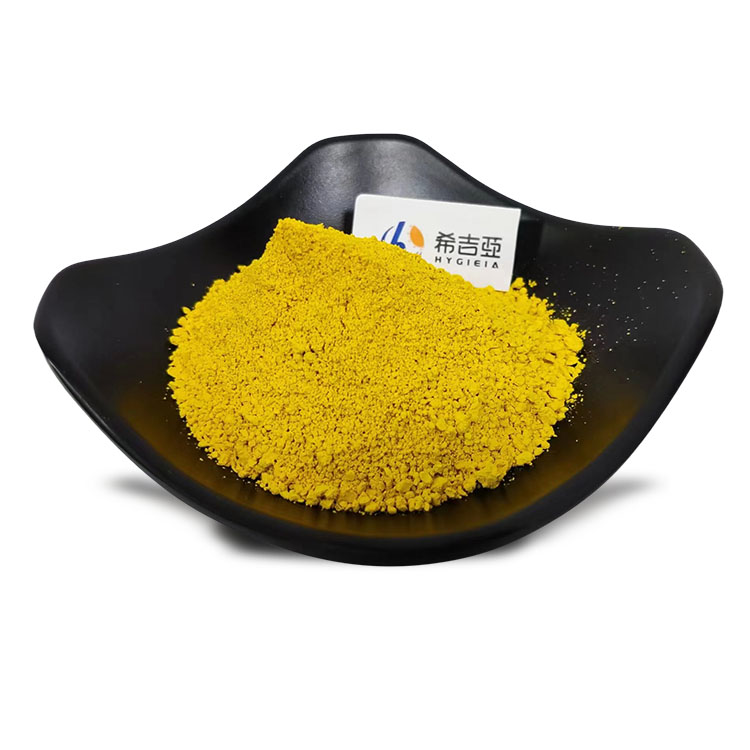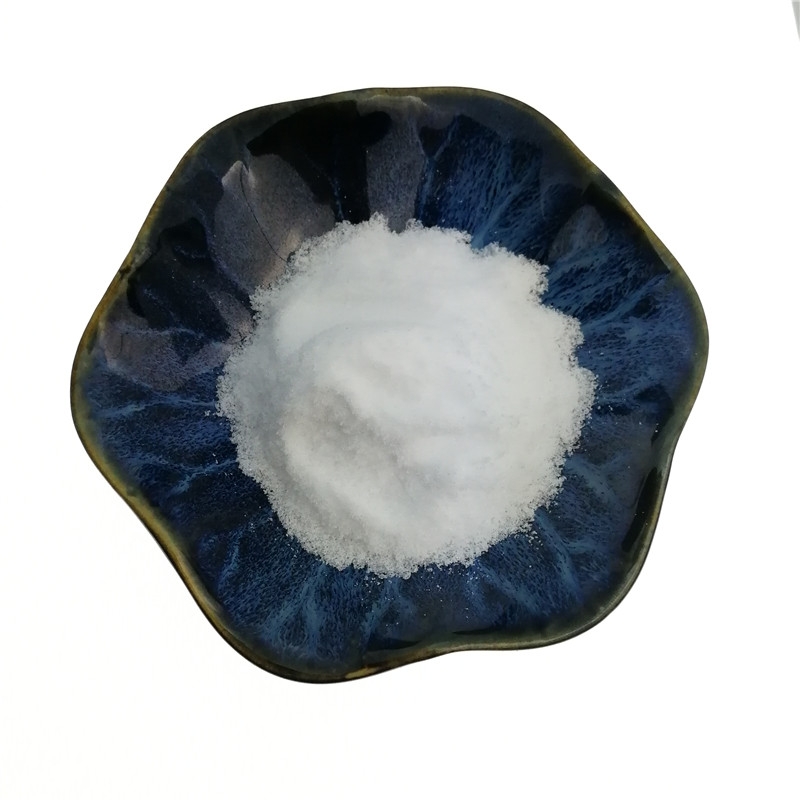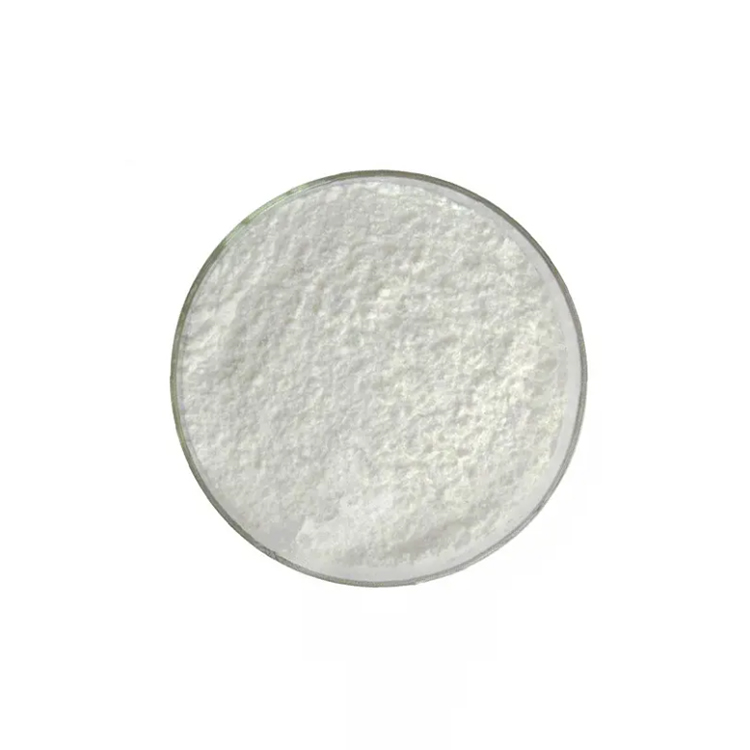-
Categories
-
Pharmaceutical Intermediates
-
Active Pharmaceutical Ingredients
-
Food Additives
- Industrial Coatings
- Agrochemicals
- Dyes and Pigments
- Surfactant
- Flavors and Fragrances
- Chemical Reagents
- Catalyst and Auxiliary
- Natural Products
- Inorganic Chemistry
-
Organic Chemistry
-
Biochemical Engineering
- Analytical Chemistry
- Cosmetic Ingredient
-
Pharmaceutical Intermediates
Promotion
ECHEMI Mall
Wholesale
Weekly Price
Exhibition
News
-
Trade Service
is one of the indispensable trace elements of human body, mainly used in the synthesis of thyroid hormones, is an important part of thyroid hormones. Thyroid hormones are essential to regulate the body's metabolism, growth and development, especially the development of the nervous system. Long-term iodine deficiency can cause a range of damage to the body, which is represented by endetrophic goiter and kertin disease. Ketin disease is based on intellectual and physical development disorders mainly iodine deficiency disease, patients are mainly due to severe iodine deficiency in embryonic and infant stage, and because of missed growth and development window, after the onset of iodine can not recover their intellectual and physical development, which is iodine deficiency on human health the greatest harm.the root cause of iodine deficiency is iodine deficiency in the environment in which people live. Iodine distribution on Earth is uneven, due to early glacial, flood and rainwater erosion, the earth's surface soil is generally iodine deficiency, of which mountain areas are more obvious. Most of our country is iodine-deficient.
results of the National Iodine Deficiency Disease (
IDD
) Census 1970-1980
showed that the rate of amthema in children was
>20%
, and the urinary iodine The
< is
50
μg/gCr, the thyroid swelling visible to the naked
eye
35 million, and the typical patient with 25 million. According to statistics, before the implementation of the Universal Salt Iodization Program (
USI
) in China (
before 1994
), the population threatened by iodine deficiency in China was about
7.27
400 million people, accounting for
45%
of the world's threatened population at that time, were distributed in
31,
provinces, autonomous regions and municipalities directly under the
central government
1995
, China began to implement universal salt iodization, iodine deficiency disease prevention and treatment has made great progress. As of
2014
, China has carried out
-
-scale national iodine nutrition monitoring. The monitoring results show that China is in the stage of continuous elimination of iodine deficiency disease. Public health and the social benefits resulting from the effective prevention of iodine deficiency diseases, such as kettin, are also universally recognized.
WHO
Committee of Experts on Iodine Deficiency Prevention and Control (
ICCIDD
)
's 2014
magazine cover article with the title "China leads the way to the continued elimination of iodine
deficiency disease"
This article summarizes the efforts and achievements of professionals in the field of iodine deficiency disease prevention and treatment in China, with the strong support of the government, and hopes that China's successful experience and future scientific iodine supplementation efforts can be used for reference by the rest of the world.Because salt is a commonly consumed food, compared to other foods, its intake is more regular, consistent, trace, is the ideal carrier of iodine
supplementation, so there are more than
140,
countries in the world using salt iodine supplementation method
At present, China is taking potassium iodide iodized salt. The addition of potassium iodide to salt has its historical background and scientific rationality, and is not as conspiratorial as online rumors suggest. By reviewing the development course of iodine deficiency disease prevention and treatment in China and the process of replacing potassium iodide with potassium iodide, there will be a scientific understanding and judgment. As early as the
50s and early
, China through epidemiological investigation
,
preliminary grasp of the Northeast, North China, Northwest, Southwest parts of the iodine deficiency epidemic, by the
60s
, the survey expanded to more than
20,
provinces in hundreds of counties.
1978
, in order to sum up the experience and promote the
prevention and treatment of iodine deficiency disease in
,
in Qinhuangdao held a "northern salt iodization prevention and control of geothema professional meeting" to discuss the formulation of the "local goiter prevention and control standards", by the
80s
, the northern provinces of iodine deficiency epidemic scope and incidence has been fully cleared
,
the southern provinces have gradually carried out a comprehensive survey and prevention work, the country has fully mastered the epidemic of iodine deficiency. During
period
the State has established the starting point for protecting the intellectual level of the people in the sick areas and improving the health
the
; In order to prevent the new development of land A disease and
disease,
ensure the healthy growth of children, eugenics and eugenics as the prevention and treatment work as a strategic
,
; To popularize iodized salt
in
areas, the prevention and control measures for the supply of iodine oil in disease areas that are not easy to implement
.1989, potassium iodide was used in China, and since then potassium iodized salt has been used. The main basis is: First, potassium iodide itself is extremely unstable, easily volatile after oxidation into iodine, and second, some factors aggravate the loss of the decomposition of potassium iodide, such as the southern hot climate, salt packaging tightness is not good, slow logistics and residents do not pay attention to sealing after the use of salt, potassium iodide is quickly thawed into iodine molecules and sublimated, a large number of iodine ions lost in a short period of time, especially to the village level villagers when eating, the salt has been mostly damaged. To this end, the epidemic prevention station in Hubei Province carried out a large-scale comparative observation of the effect of prevention and control, and found that due to the special stability of potassium iodide, it is helpful to achieve the effect of iodine supplementation
.5
. Finally, in order to ensure the stability of salt iodine, seven ministries signed the replacement of potassium iodide with potassium iodide processing iodized salt. As potassium iodide is a strong oxidant, there is a risk that the body may cause some damage, so in recent years, the doubts about potassium iodate have become increasingly high. In fact, whether a substance poses a threat to human health should be analyzed from the level of human exposure. We have both oxidants and many reducing agents in our daily diet. People's daily intake of fruits and vegetables includes a large number of reduced substances such as vitamin
C
, vitamin
C
content alone is generally more than
60 mg
per day
6-7)
, and potassium iodide intake from iodized salt is between
100-300ug
, so potassium iodide in salt is easily reduced by the reductive substances in food. Recently, in order to understand the extent to which potassium iodate in salt is reduced in cooking, the National Iodine Deficiency Reference Laboratory of the China
CDC
Institute of Nutrition and Health conducted a study that simulated
15
home cooking methods, and after cooking food used an efficient liquid chromatography
-
inductively coupled plasma spectrometry method to detect the morphology and content of iodine spectrometry. The results showed that, whether iodized salt was added to food cooking or added iodized salt hot after the pot, the roots of iodized salt were almost completely reduced by food, of which
86.5%
was converted to iodine ions,
13.2%
loss (mainly converted to iodine molecules), and the total conversion rate was
99.7 %
. In other words, after home heating and cooking, potassium iodate in salt has been basically converted into non-oxidizing substances
the
. As a result, the risk of damage to the body caused by the oxidizing properties of potassium iodide disappears. Of course, with the development of China's social economy, salt packaging, logistics have been greatly improved, the stability of potassium iodide iodized salt has also been guaranteed to a certain extent. In order to avoid risks as much as possible, some scholars believe that salt can be added using potassium iodide, which is more safe. However, the stability of potassium iodide iodized salt needs to be further confirmed.iodine is a micronutrient, iodine deficiency and excess iodine can have different degrees of impact on the health of the body. With the implementation of universal salt iodization prevention measures to prevent iodine deficiency, the academic community and society are increasingly concerned about the problem of iodine overdose. On the whole, iodine deficiency is far more harmful to the health of the body than iodine overdose, which has been recognized by the academic community as
of the world.
, the prevention of iodine deficiency and iodine overdose should therefore be the first priority. However, with the development of society and the improvement of the level of science and technology, people's reasonable demand for "neither lack nor excessive iodine nutrition is appropriate" is getting higher and higher. In fact, since the implementation of
USI
in China,
7
large-scale national monitoring and
4
adjustment of iodized salt concentration, but also to achieve the "local conditions, classification guidance, scientific iodine supplementation" goal and strive to do specific work.
the latest iodized salt standards issued by the state in
2012 have been changed from a national iodized salt concentration to recommend
30 mg/kg
,
25 mg/kg
,
20 mg/kg
three iodized salt fortification levels, and the provinces according to the local iodine nutrition to choose
the public should keep a clear head and have a scientific and rational understanding of some of the current online claims. The state formulates the salt iodine supplement policy from the people's health, the means of iodine supplementation is after investigation and scientific demonstration, as far as possible in accordance with the method of evidence-based medicine to ensure the safety of iodine nutrition, in order to continuously optimize the strategy of salt iodine supplementation, so that it is more scientific and reasonable and lasting service to the people. Macro public health intervention policy should be guided by the protection of public health, and public concern is also the driving force for the development of new technologies and methods. Satisfying the public's health demands is the goal of workers in the field of iodine nutrition and iodine deficiency disease prevention and treatment. Due to differences in geographical environment, individual eating habits and physiological status, a level of iodized salt concentration is really difficult to meet the needs of different people. Therefore, after solving the main contradiction of iodine deficiency, with the development of Internet technology, as well as the development of iodine nutrition research, nutrition evaluation and precision intervention technology, to provide the public with an individual precision iodine nutrition evaluation system will also be born. In the Internet age, the vision of "iodine nutrition for all" is bound to be realized.
. 1. Chen Zupei. Current Iodine Deficiency Disease Prevention and Control Issues s. J. Chinese Journal of Endemic Diseases, 2004, 23 (3): 193-4 2.Karen Codling, Zupei Chen, Shen Hongmei, Mu Li, Yunyou Gu, Zhen Xin Lu, Suying Chang.China: Leading the way sustained IDD. IDD Newsletter, 2014, (42): 2-5 3.Pearce EN, Andersson M, Zimmermann MB. Global iodine nutrition: Where do we stand in 2013? Thyroid 2013, 23 (5): 523-8.. 4. Sun Temple Army, Wei Honglian, Shen Hongmei, Wang Zhongbo, Wang Zhiwu, Liu Shoujun, Sun Yufu, Chen Zhi. China's local disease prevention and control 50 years of
.
Chinese Medical Association National Conference on Local
, 20035.
Chen Wenliang
,
Huang Xiuying
,
Gao Shouqiong
. Experimental observation of potassium iodide and potassium iodide salt and iodine loss during storage. J.
, China Journal of
Prevention and Control, 1988, 5 (3) 292-36.
Chinese Nutrition Society
.
Dietary Nutrient Reference Intake
(
2013
)
.
Journal of Nutrition,
2014, 36 (04): 313-7 7.Ma Yuxia,
Zhang Bing
,
Wang Huijun
,
Du Wenjun
, Su Chang, Yin Fengying. Dietary nutrient intake status and changing trends of residents of nine provinces and regions of China, 1989-2009 (9) 18-49 years of age adult residents dietary vitamin C intake status and changing trends.
Nutrition Journal
, 2012, 34 (5): 427-31 8.China
CDC
National Institute of Nutrition and Health National Iodine Deficiency Reference Laboratory Liu Lixuan, etc., the latest experimental results, to be published. . 9. Zimmermann MB, Andersson M. Assessment of iodine nutrition in populations: past, present, and future. Nutr Rev, 2012, 70 (10): 553-70 10. Ministry of Health of the People's Republic of China. Iodine Content of Edible Salt (GB 26878-2011) .







